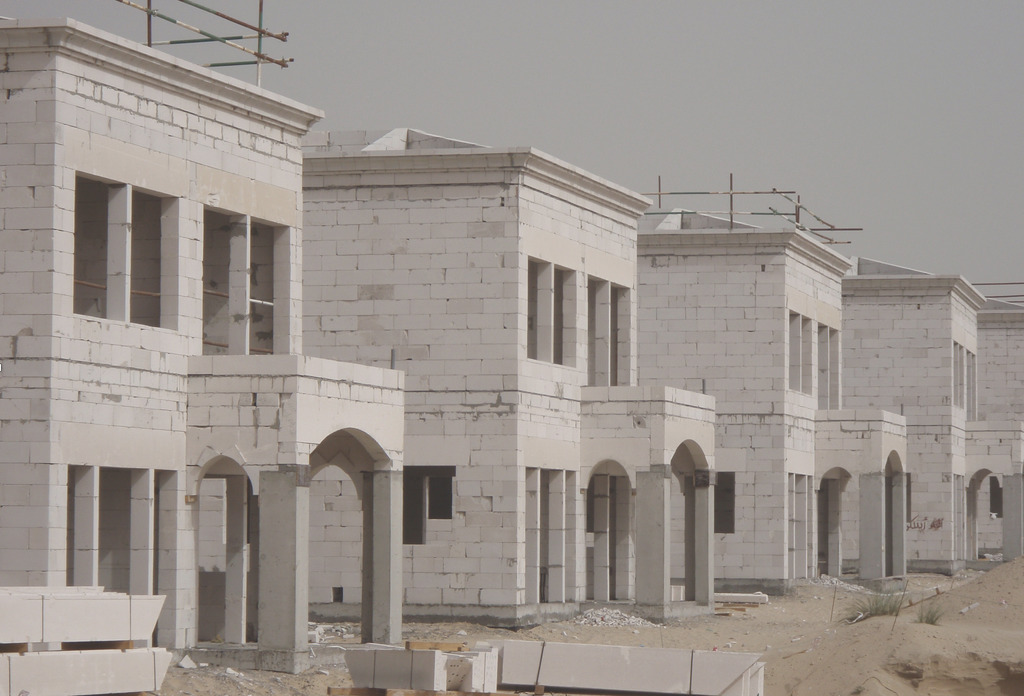News & Markets
A Strategic Imperative lead by MHE Group
Advancing AAC in Indonesia
The Case for AAC: Beyond Infill
The traditional approach of using AAC for 100mm infill limits its potential. Imagine offering a client not just 100 cubic meters of infill but 250 cubic meters of comprehensive structural components, including 200 or 250mm thick blocks, slabs, floors, and roof panels. This paradigm shift not only triples the material usage but also significantly enhances the structural integrity and sustainability of buildings. For Indonesia, a market characterized by rapid construction growth and a pressing need for resilient infrastructure, this approach is not just innovative; it's essential.
Several construction projects have already adopted the MHE Group's innovative solutions for load-bearing applications, with additional ventures on the horizon in Indonesia. MHE Group, in collaboration with ACCO AAC International, is diligently working to transform Indonesia’s prevailing AAC construction methodologies, steering the industry toward a more advanced and sustainable future.


From the Client's Perspective: Value and Efficiency
Adopting AAC as a structural component transforms the construction landscape from several angles:
• Speed and Efficiency: The installation of AAC bypasses traditional shoring, casting, and curing times, streamlining the construction process significantly.
• Reduced Material Use: With AAC's structural capabilities, there's a marked decrease in the need for concrete and reinforcement, leading to cost savings and a lighter environmental footprint.
• Enhanced Durability: AAC eliminates common issues like incremental settlement, thermal bridging, and the formation of cracks where concrete columns meet AAC infill.
• Fire Resistance: Entire structures, including rooms, benefit from AAC's fireproof qualities, enhancing safety.
• Thermal Efficiency: The material's insulating properties mean lower air-conditioning costs, a critical factor in Indonesia's tropical climate.
• Cost Effectiveness: When considering the entire lifecycle of a building, the AAC load-bearing system emerges as at least 10% cheaper than traditional construction methods.
Moreover, AAC's resistance to termites and its non-organic nature prevent mold and mildew, contributing to healthier indoor air quality. Its sound absorption capabilities also make it ideal for construction in noisy urban areas, providing a peaceful living environment. All of these characteristics are pivotal in success if we are talking about Indonesia.
Proven Success in Seismic Zones
Michael Hofman's engineering team's success with a six-story building in Mayotte, designed with AAC as a load-bearing material, showcases AAC's potential in seismic zones. This project, accredited by Bureau Veritas, underlines AAC's reliability and safety in areas prone to earthquakes, making it particularly relevant for Indonesia, located on the Pacific Ring of Fire.

Conclusion
Indonesia's construction industry stands at a crossroads, with AAC offering a path to more sustainable, efficient, and resilient building practices. The benefits of AAC, from economic to environmental and health-related, align with Indonesia's development goals. As the nation embraces this technology, it not only sets a precedent for the region but also demonstrates the global viability of AAC in modern construction. MHE´s vision for AAC in Indonesia is more than just a shift in material preference; it's a strategic move towards redefining the future of construction, promising buildings that are safer, greener, and more efficient.